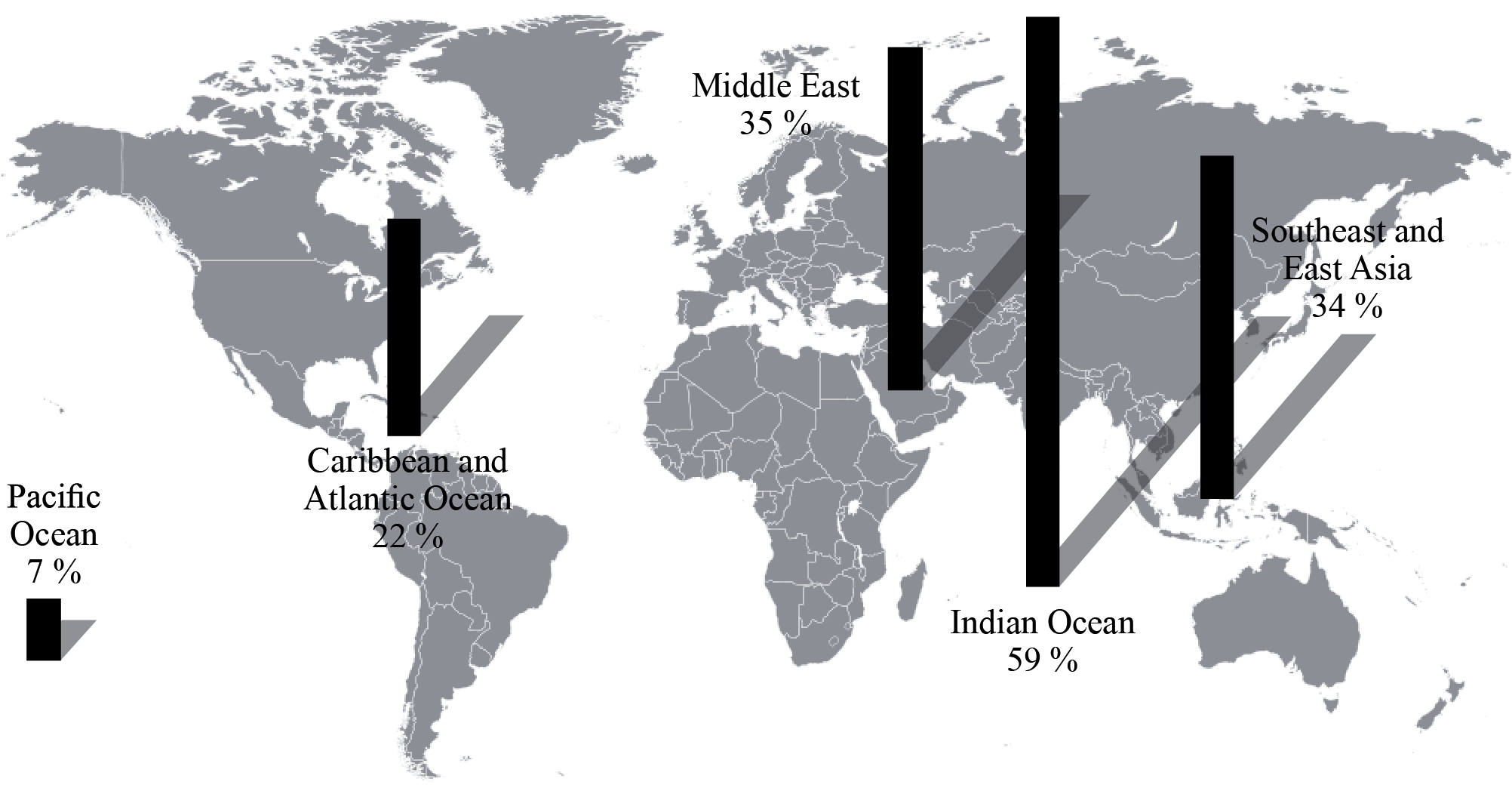| Date | May 2011 | Marks available | 3x2 | Reference code | 11M.2.bp.3 |
| Level | SL and HL | Paper | 2 | Time zone | |
| Command term | Explain | Question number | 3 | Adapted from | N/A |
Question
The graph shows the percentage of coral reefs that have been lost since 1960.

[Source: adapted from http://commons.wikimedia.org/wiki/File:World_Blank_Map_(Mercator_projection).svg]
Describe the pattern of loss of coral reefs.
State two physical factors which are needed for the development of coral reefs.
Explain three benefits that coral reefs bring to people.
Examine the conflicts which arise from competing land uses in coastal margins.
Markscheme
The greatest loss is in the Indian ocean and the least is in the Pacific [1 mark]. There is more loss in Eastern hemisphere than Western hemisphere [1 mark].
For a simple list with quantification award only 1 mark.
Award 1 mark each, for two of the following:
- availability of sunlight
- warm salt water
- clear, shallow water
- the accumulation of skeletal material, broken and piled up by wave action
- availability of calcium
- wave action providing oxygen and/or nutrients.
Other valid factors may be accepted.
The benefits may include: building materials, tourism, absorption of CO2, natural coastal protection, maintenance of biodiversity and fish stocks, and the biological links to mangroves.
Award 2 marks for each relevant explanation – 1 mark for identification of a valid benefit, and 1 mark for explanation/elaboration/exemplification.
Competing land uses which may lead to conflicts include the following: agriculture, tourist developments, fishing villages, coastal erosion mitigation projects, ports, industry, urban settlements, protected areas, aquaculture.
The conflict may also be between different places (for example, longshore drift interrupted by groyne/breakwaters leading to erosion elsewhere), or may change over time (for example, measures to protect an actively eroding cliff are abandoned as they are too costly to maintain).
Answers should examine land uses which are in conflict with each other, and while examples are not a specific requirement of the question, those answers that provide supporting examples are likely to access higher markbands.
To access bands E and F, expect at least two conflicts, one of which is well explained.
Marks should be allocated according to the markbands.
Examiners report
This was generally well done although a minority of candidates made a list rather than described a pattern.
This was generally very well done – candidates were clearly aware of the factors that are needed for the development of coral reefs.
Again, a well-developed answer, in general, with benefits being explained.
This question generated a variety of responses, from those that were focused and well supported to those that were not answering the question. The latter frequently meandered into geopolitics and competition for ocean resources rather than competing land uses along coastal margins.

